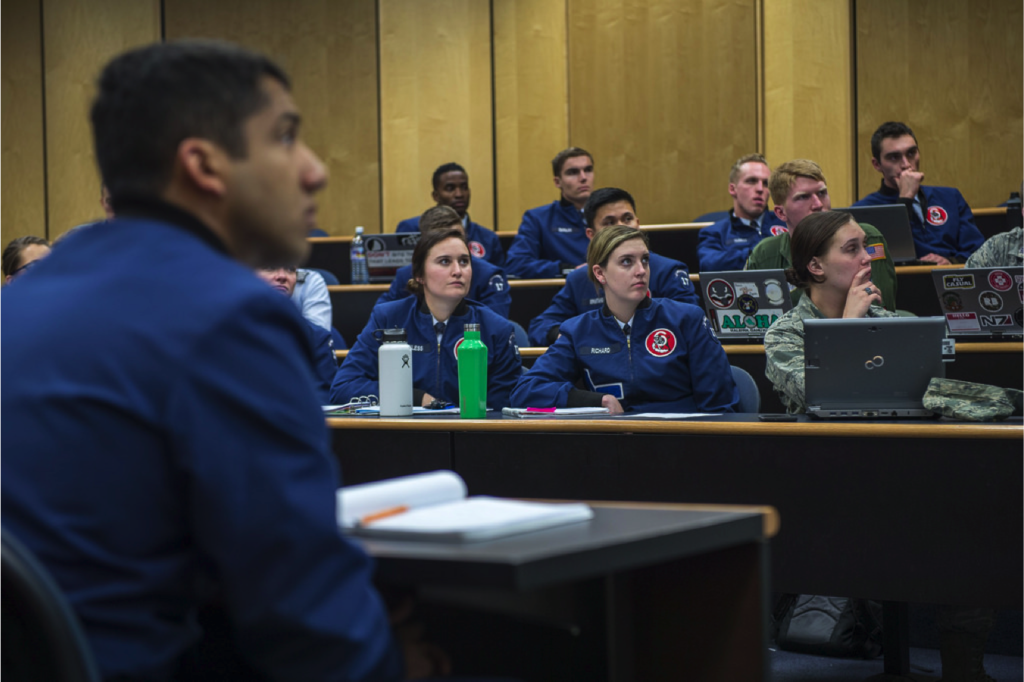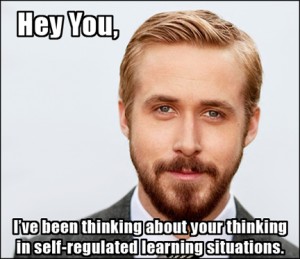By Lauren Scharff, Ph.D., U. S. Air Force Academy *
At my institution we have created the Science of Learning Team, a group of students who learn about the science of learning (including metacognition) and then lead seminars for other students who are hoping to improve their academic success. Additionally, as part of an ongoing scholarship of teaching and learning (SoTL) project, a small group of us (faculty and students) has assessed the efficacy of our various efforts to disseminate the science of learning to both faculty and students.

This past academic year I had the pleasure of working with Troy Mather, a senior who joined both the Science of Learning Team and the SoTL project effort as his capstone project. Below are some of his final reflections regarding his experiences helping develop his peers’ metacognition and learning skills. I believe they provide some great insights regarding the personal characteristics necessary for metacognition. He also shares some personal applications that many of us might use as a model as we work to develop metacognition in our students.
What is metacognition and why is it important?
My personal definition for metacognition is having the awareness to self- regulate your learning approaches through modifications or corrections. Having the awareness to identify what you need to work on or change gives you the opportunity to grow. It does require modesty and humbleness to look at yourself and be motivated to change something you see as an area for growth. If you are someone like me, who isn’t someone naturally gifted with academics, metacognition is a tool that you can use to guide your growth as a student and learner.
What is the biggest challenge to developing student metacognition skills?
The biggest challenge I see with developing student metacognition skills is the fact that this skill is largely correlated with maturity. Time is a limiting factor because developing self-regulation doesn’t happen overnight. This makes teaching metacognition hard because you can tell others the definition of the concept and why it is important, but you can’t make them internalize the importance or change their behaviors. However, I have seen that most students eventually figure it out with time and maturity.
How can we overcome this challenge?
Something I found to help students get on that track of appreciating metacognition is by providing some personal examples of ways I have self-regulated my learning approaches and made clear improvements. Students listen to those moments of success and often feel more willing to make changes or even become more aware of what they should work on. Sometimes this goes outside of the academic environment. For example, one of the ways I have been most impacted by metacognition is with my training to be selected for Special Tactics/ Combat Rescue following my graduation.1
I told my students in our Science of Learning seminars that my training experience was a journey of self-reflection and deep accountability. Every day I had to have the self-awareness and honesty to identify my weak areas and do something about it. Some days I didn’t want to drown in the pool. Some days I didn’t want to run a marathon. And some days doing thousands of body weight exercises when I was already sore was a miserable thought. But, I pushed myself to do those things everyday because I knew if I didn’t, I wouldn’t reach my goal. I got a professional free- dive instructor and a track coach to help me with my training regimen. It was metacognition that allowed me to see areas to improve and reach out for resources.
With academics, students need to take advantage of all the resources they have in front of them. But, this requires self-accountability to make those identifications and be willing to put in that extra work. I told our students about my experience training for Special Operations because they hopefully saw someone with high ambitions and the willingness to put in the work. Every once in a while, learners need a motivational story to put them on track to accomplish their own goals. I have learned that metacognition is the start to achieving any level of greatness.
Using Troy’s Examples
Troy mentions humbleness and self-honesty as underlying characteristics of successful engagement in metacognition. That is not an aspect of metacognition that I have seen widely discussed, but it’s a great insight. It can be uncomfortable acknowledging aspects of our own efforts that have not been successful, and then examining them closely enough to come up with alternate strategies. This discomfort is especially strong if the alternate strategies appear to require more effort, and we’re not certain that they will lead us to success.
Many of our students face these uncomfortable moments on their path to become better learners. Perhaps we can help them through these uncomfortable barriers by more openly acknowledging the discomfort in facing one’s shortcomings, and letting students know that they are not alone in experiencing discomfort. Motivational stories such as the one Troy shared can help ease the resistance to being metacognitive. I’m sure we can all come up with a personal story or two that illustrate our own experiences as developing learners in some realm. Hopefully we can move past our discomfort in sharing our struggles in order to motivate our students to face their own struggles and self-regulate to move beyond them.
————————–
1 Special Tactics/ Combat Rescue is an elite team within the Special Operations career field of the Air Force.
* Disclaimer: The views expressed in this document are those of the author and do not reflect the official policy or position of the U. S. Air Force, Department of Defense, or the U. S. Govt.
